Related Research Articles

28978 Ixion (, provisional designation 2001 KX76) is a large trans-Neptunian object and a possible dwarf planet. It is located in the Kuiper belt, a region of icy objects orbiting beyond Neptune in the outer Solar System. Ixion is classified as a plutino, a dynamical class of objects in a 2:3 orbital resonance with Neptune. It was discovered in May 2001 by astronomers of the Deep Ecliptic Survey at the Cerro Tololo Inter-American Observatory, and was announced in July 2001. The object is named after the Greek mythological figure Ixion, who was a king of the Lapiths.
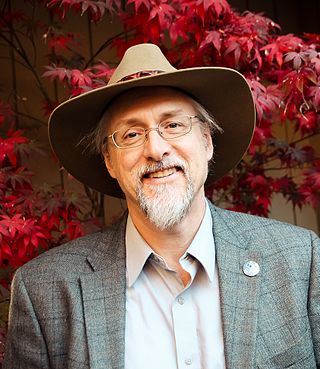
Marc William Buie is an American astronomer and prolific discoverer of minor planets who works at the Southwest Research Institute in Boulder, Colorado in the Space Science Department. Formerly he worked at the Lowell Observatory in Flagstaff, Arizona, and was the Sentinel Space Telescope Mission Scientist for the B612 Foundation, which is dedicated to protecting Earth from asteroid impact events.

Strath Taieri is a large glacial valley and river plateau in New Zealand's South Island. It is surrounded by the rugged hill ranges to the north and west of Otago Harbour. Since 1989 it has been part of the city of Dunedin. The small town of Middlemarch is located at its southern end.

A grazing lunar occultation is a lunar occultation in which as the occulted star disappears and reappears intermittently on the edge of the Moon. A team of many observers can combine grazes and reconstruct an accurate profile of the limb lunar terrain.

Space Place at Carter Observatory is an observatory in Wellington, New Zealand, located at the top of the Wellington Botanic Garden.
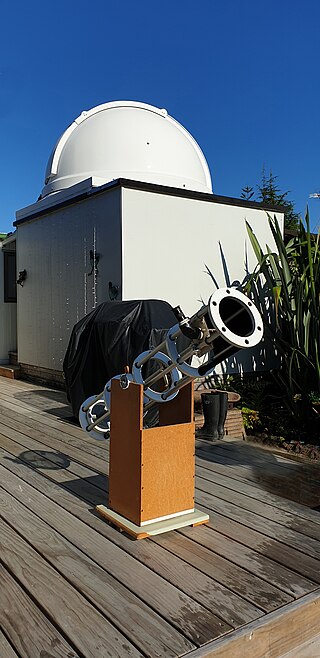
Farm Cove Observatory (FCO) is an amateur astronomical observatory in Pakuranga, Auckland, New Zealand, where Jennie McCormick discovered the main-belt asteroid 386622 New Zealand in September 2009.
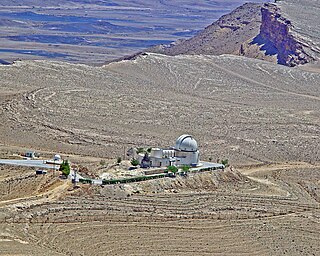
The Florence and George Wise Observatory is an astronomical observatory owned and operated by Tel Aviv University. It is located 5 kilometers west of the town of Mitzpe Ramon in the Negev desert near the edge of the Ramon Crater, and it is the only professional astronomical observatory in Israel.

The Kodaikanal Solar Observatory is a solar observatory owned and operated by the Indian Institute of Astrophysics. It is on the southern tip of the Palani Hills 4 kilometres (2.5 mi) from Kodaikanal.
Leuschner Observatory, originally called the Students' Observatory, is an observatory jointly operated by the University of California, Berkeley and San Francisco State University. The observatory was built in 1886 on the Berkeley campus. For many years, it was directed by Armin Otto Leuschner, for whom the observatory was renamed in 1951. In 1965, it was relocated to its present home in Lafayette, California, approximately 10 miles (16 km) east of the Berkeley campus. In 2012, the physics and astronomy department of San Francisco State University became a partner.
Anderson Mesa Station is an astronomical observatory established in 1959 as a dark-sky observing site for Lowell Observatory. It is located at Anderson Mesa in Coconino County, Arizona, about 12 miles (19 km) southeast of Lowell's main campus on Mars Hill in Flagstaff, Arizona.

Ian P. Griffin is a New Zealand astronomer, discoverer of minor planets and a public spokesman upon scientific matters. He is currently the Director of Otago Museum, Dunedin, New Zealand. Griffin was the CEO of Science Oxford, in Oxford, United Kingdom, and the former head of public outreach at NASA's Space Telescope Science Institute.
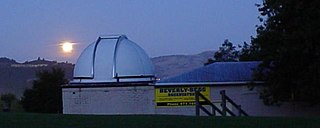
The Beverly-Begg Observatory is a New Zealand astronomical observatory, situated in Robin Hood Park in the Belleknowes part of Dunedin's town belt. It was established in 1922 by the Dunedin Astronomical Society (DAS) and is the home of the group.

The Hirsch Observatory is an astronomical observatory at Rensselaer Polytechnic Institute (RPI) in Troy, New York. It is located on the roof of the Jonsson-Rowland Science Center and is used by members of the Rensselaer Astrophysical Society as well as astronomy students in laboratory exercises. It is frequently opened to the community for public viewing sessions. The observatory's main dome contains a 16" Cassegrain Reflector, with a CCD camera and fully computerized controls. The observatory also owns a variety of smaller scopes and a SBIG Spectrograph. The spectrograph has been used to catalog bright solar spectrum as part of an effort to create an online digital database for astrophysical research. The current director of the observatory is Professor Heidi Newberg.

Mills Observatory is the first purpose-built public astronomical observatory in the UK, located in Dundee, Scotland. Built in 1935, the observatory is classically styled in sandstone and has a distinctive 7 m dome, which houses a Victorian refracting telescope, a small planetarium, and display areas. The dome is one of two made from papier-mâché to survive in the UK, the other being at the Godlee Observatory.

The Dearborn Observatory is an astronomical observatory located on the Evanston campus of Northwestern University. The observatory was originally constructed in 1888, through an agreement between the university and the Chicago Astronomical Society. In the summer of 1939, Dearborn Observatory had to be moved to make way for the construction of the Technological Institute.
The Royal Astronomical Society of New Zealand (RASNZ) is the New Zealand national astronomical society. It is an association of professional and amateur astronomers with the prime objective to the promotion and extension of knowledge of astronomy and related branches of science.
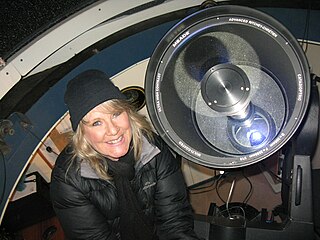
Jennie Margaret McCormick, FRASNZ is a New Zealand amateur astronomer and asteroid discoverer who conducts astronomical research from the Farm Cove Observatory in Auckland. She discovered the asteroid officially named New Zealand and has contributed to and been involved in a range of organisations and events to promote astronomy. McCormick has published in several journals and won awards for her contributions to astronomy.
The Mount Stony Brook Observatory is an astronomical observatory operated by Stony Brook University in Stony Brook, New York. It is located on the roof of the Earth and Space Sciences Building. The dome contains a Meade 14" Maksutov–Cassegrain telescope and SBIG (SBIG-STL1001e) imaging equipment. The telescope is used for teaching undergraduate and graduate astronomy labs by the department, as well as by the Astronomy club. The observatory's imaging capabilities have been used to monitor variable stars. On the first Friday of every month during the school year the department hosts "Astronomy Open Nights" during which a lecture is given, followed by observing if the weather permits. The observatory was built in 1968 and Astronomy Open Nights have been held there since 1976. The current telescope was installed in 1981.

Arthur Beverly was a New Zealand watchmaker, mathematician and astronomer.
Tenagra Observatory and Tenagra Observatory II are astronomical observatories in Cottage Grove, Oregon and Arizona. The observatories house heavily automated robotic telescopes.
References
- ↑ "RASNZ Affiliated Societies - DAS". Archived from the original on 1 February 2010. Retrieved 25 May 2009.
- ↑ Royal Society of New Zealand, Otago Branch - Historical Review
- ↑ Transactions and Proceedings of the Royal Society of New Zealand - Volume 45
- ↑ Transactions and Proceedings of the Royal Society of New Zealand - Volume 79
- ↑ Link Charity Summary page
- ↑ Otago Institute - DAS Centennial Program Archived 24 July 2011 at the Wayback Machine
- ↑ "IOTA-VTI" . Retrieved 14 August 2016.
- ↑ "The ST-8300M and ST-8300C High Resolution CCD Cameras". SBIG. Retrieved 14 August 2016.
- ↑ Gibb, John (June 2015). "Fleeting moment in Pluto's shadow". Otago Daily Times. Otago Daily Times. Retrieved 14 August 2016.
- ↑ Sicardy, B.; Talbot, J.; Meza, E.; Camargo, J. I. B.; Desmars, J.; Gault, D.; Herald, D.; Kerr, S.; Pavlov, H.; Braga-Ribas, F.; Assafin, M.; Benedetti-Rossi, G.; Dias-Oliveira, A.; Ramos-Gomes-Jr, A.; Vieira-Martins, R.; Berard, D.; Kervella, P.; Lecacheux, J.; Lellouch, E.; Beisker, W.; Dunham, D.; Jelinek, M.; Duffard, R.; Ortiz, J. L.; Castro-Tirado, A. J.; Cunniffe, R.; Querel, R.; Yock, P. A.; Cole, A. A.; et al. (2016). "Pluto's atmosphere from the 29 June 2015 ground-based stellar occultation at the time of the New Horizons flyby". The Astrophysical Journal Letters. 819 (2). arXiv: 1601.05672 . doi:10.3847/2041-8205/819/2/L38.